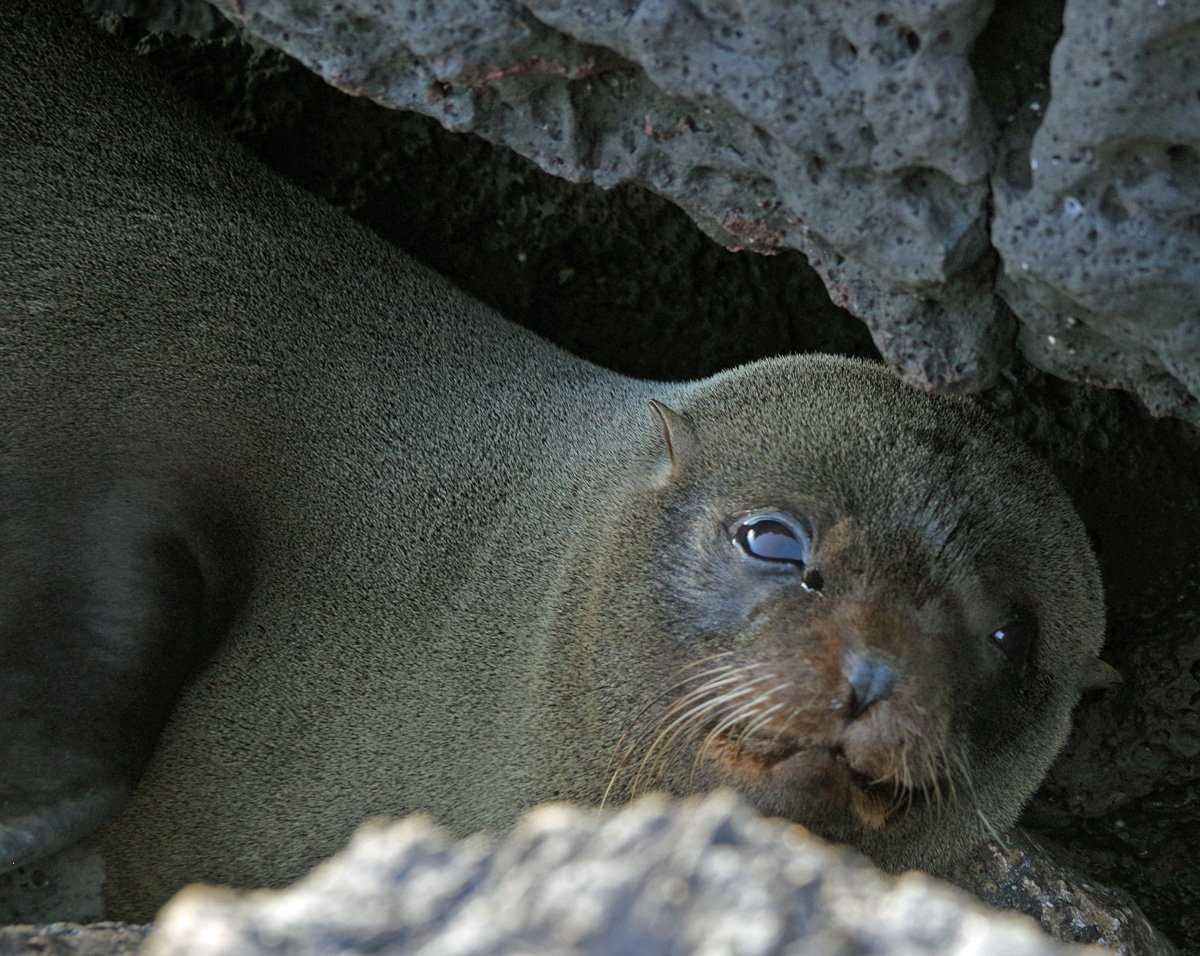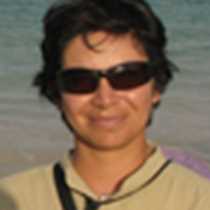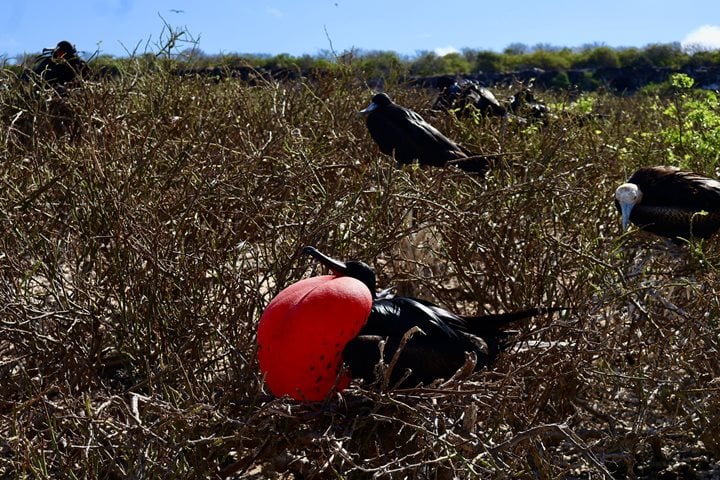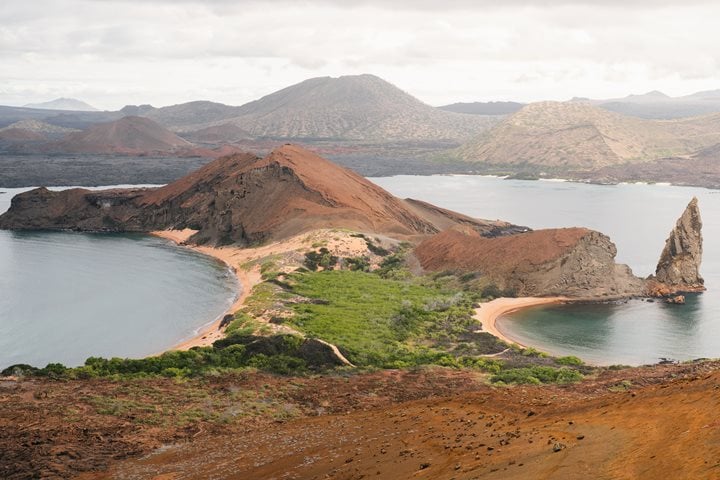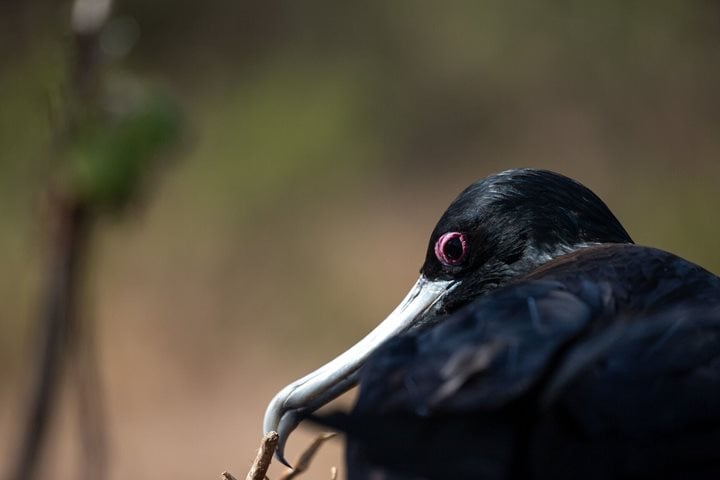Today we were visiting our adopted island: Santiago. This island is located on the central part of the archipelago, and Charles Darwin spent 9 days here during his visit to the Galapagos archipelago in 1835. We are following his footsteps as we discover its beautiful landscapes and amazing endemic creatures!
We started our day early in the morning with a visit to Espumilla Beach. The dark sand of this beach is a popular nesting site of the Pacific green sea turtle, and this morning we found not only their tracks, but also sea turtles heading into the water after laying eggs. The trail led inward, taking us first through a deep mangrove forest, with amazing changes of lights and shadows, and afterwards through a beautiful mature palo santo forest. Here we had time to observe the famous Darwin finches, yellow warblers, Galapagos flycatchers, Galapagos doves, and the top predator of the islands, the Galapagos hawk.
After breakfast the adventure continued at Buccaneer’s Cove, where kayaking, deep water snorkeling and glass bottom boat rides were offered. We enjoyed the calm and clear waters for all the activities—snorkeling is always unpredictable, but today was unbelievable. A playful fur seal came to greet us and stayed with us for a long time, many different kinds of tropical fishes were all around us, marbled rays were resting under the rocks and we even spotted several white tipped reef sharks. We were in the water for an hour and forty-five minutes! As soon as we returned to the ship, the National Geographic Endeavour pulled anchor and repositioned to our next destination, Puerto Egas.
In the afternoon we disembarked on a hot and black sandy beach—it was a good time to observe the Galapagos sea lions, and this is a great place to snorkel from the beach. It was another great snorkeling outing and our guests encountered playful sea lions and several sea turtles. Afterwards we walked along the coast to an area known as the grottos, which is a series of collapsed lava tunnels. We were able to find several Galapagos fur seals, who often make their way into the fissures and crevices of the tunnels, to rest in the shade. The landscape is just overwhelming, it is impossible to describe the unique beauty of the scene: turquoise waters, perfect weather conditions, colorful Sally Lightfoot crabs on dark rocks, spectacular intertidal pools with marine iguanas, Darwin finches and bright adult yellow warblers, and an American oystercatcher nesting right on the sandy trail.
It was another perfect day in this magical place!

